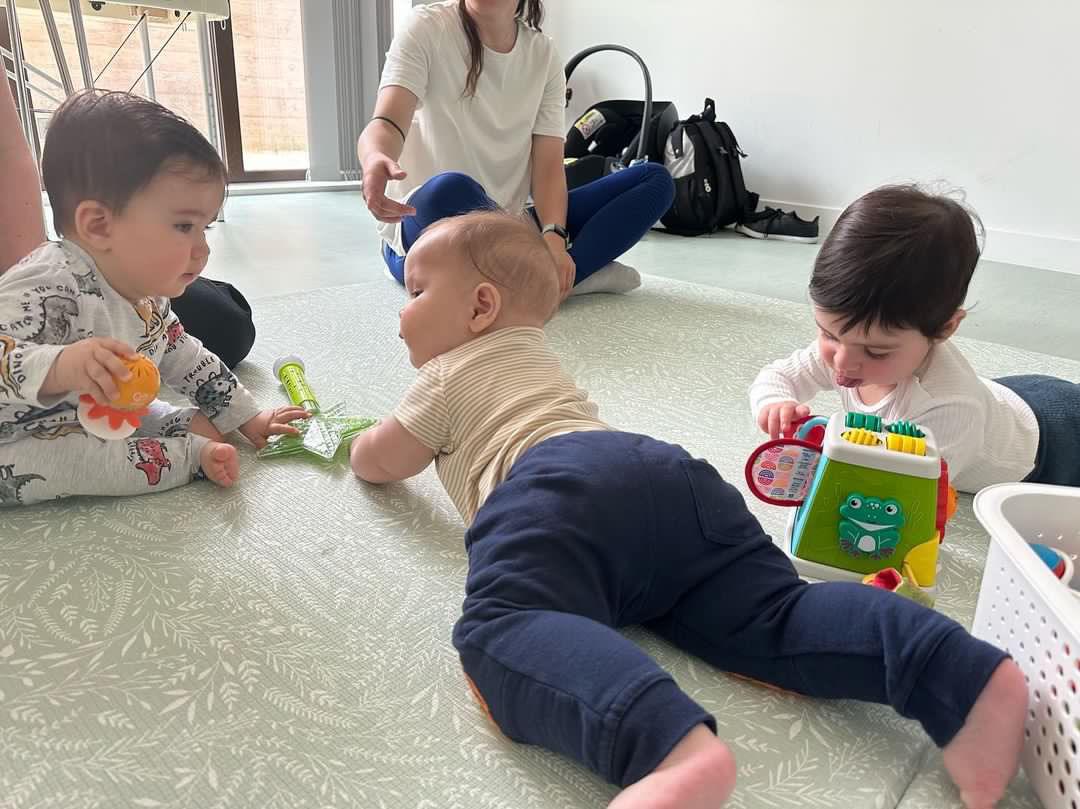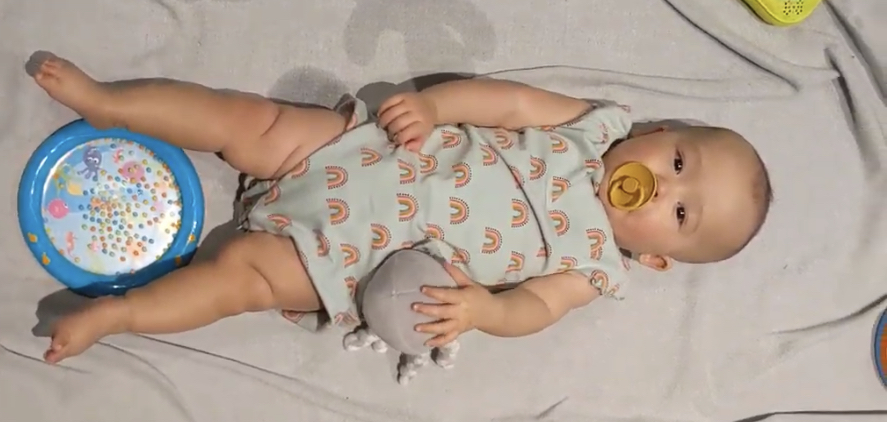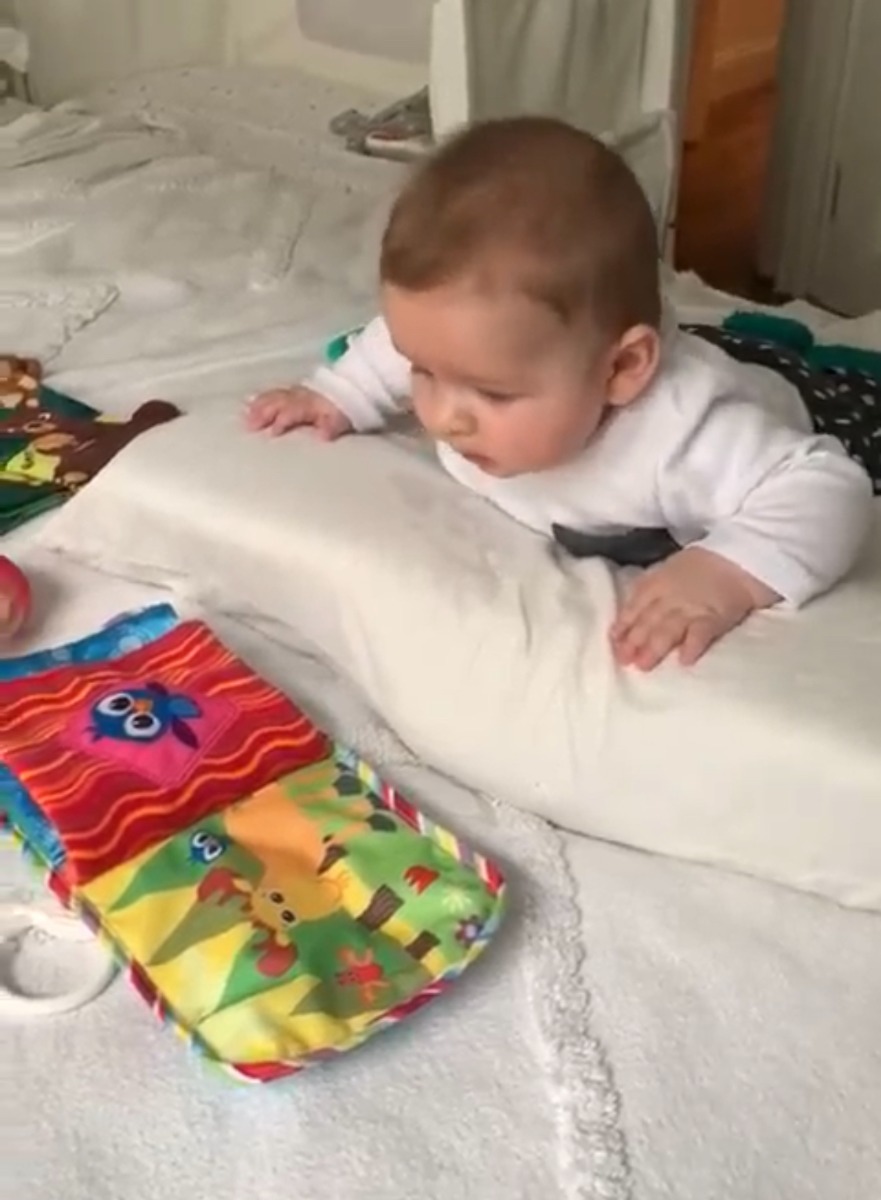Cookies and Privacy
Daytot processes information about your visit using cookies to improve site performance, facilitate social media sharing and offer advertising tailored to your interested.
By continuing to browse our site, you agree to the use of these cookies. For more information see our
Privacy & Cookie Policy.
Stage 1 - Learning to Move Arms & Legs

Babies are learning new skills all day, every day! People talk lots about major milestones like rolling, sitting and walking. But the truth is, all movements are big milestones! Over this blog series, paediatric physiotherapist and new mum, Hannah Spink, talks through stimulating bonding routines for parent and baby, that encourage movement and promote gross motor development. What’s also exciting is that these are great ways for parents to have fun, relax and enjoy their new baby. So grab a cup of tea, get comfy and enjoy these special activities together.
Stage 1 – Learning to Move Arms & Legs
Your baby has not been in the big wide world for long, and they are learning that they have 4 limbs, that belong to them! And that are controlled by them. This stage is exciting, interesting and tiring all at the same time! And it is the perfect time for some stimulating bonding activities with parent and baby, getting those neurons firing and the body developing. Babies at this stage are learning that an action causes a reaction. We are going to utilise this with the following activities, to develop purposeful movement!
Stage of Development:
Try this activity if your baby has non-purposeful, jerky movements of their arms and legs. This is suitable for your baby if they are not yet ready show interest in toys.
You will need:
- Wrist rattles
- A foil or crinkly blanket
- A rainmaker
- A noisy toy
Activity 1:
Place baby on their back, looking up at you. You can have them on an incline, if needed for reflux. Start by singing ‘the wheels on the bus’ and moving their legs round and round, in big circular movements. This warms up the legs and provides feedback to their skin and muscles, waking them up for movement! Now use a toy that causes a large reaction, e.g. a rainmaker, or a foil blanket. Place it by baby’s legs, making sure it is in perfect reach for a kick! Wait for baby to kick the object, and let them hear the crash or crinkle. Use big facial expressions, and lots of praise when they do! Repeat on each leg, alternating, for 2-5 minutes, or until baby has had enough!

Benefits:
This activity is teaching baby how to move their new found legs! They will very quickly become motivated to kick, and the kicks will get stronger and stronger. Kicking strengthens the leg and hip muscles, and gets baby ready for new skills later on, such as bringing feet to hands, and feet to mouth.
Activity 2:
Place baby on their tummy, with wrist rattles on. You can use a tummy time pillow, a rolled up towel under their chest, or they can do this on your chest. Sing ‘if you’re happy and you know it, shake your arms’ and gently shake their arm so they hear the rattle. This helps them connect the ‘action’ to the ‘reaction’ and warms up their arms. Next, wait for baby to move their arm, and give them lots of praise and smiles when they do. Do this for 1 minute, or as long as baby is happy and comfortable.

Benefits:
This activity helps baby move their arms in a purposeful way, and to look at their arms. They will learn that the action of movement causes a reaction, and will slowly start to take interest in the rattle and their own hands and arms. This in turn, encourages moving the head from side to side, strengthening the neck and the eye muscles, to fix and follow on an object.
Setting up a Play-space:
Baby’s surroundings make all the difference to play and movement! At this stage, a baby gym is great, with more toys to the sides, and by baby’s feet. Crinkly and noisy blankets near feet encourage kicking, and black and white, high contract pictures to the sides encourage turning the head, strengthening neck muscles. Make sure toys are reachable, and make them longer and closer to baby if needed.
How to dress Baby:
Yes, what you dress baby in matters for movement! There are many tiny receptors on the skin, that send messages to the brain about baby’s whereabouts in space, and how to move the muscles. These are vital for learning brand new movements. So try to have bare feet and hands when possible. Don’t use clothes that restrict or prevent movements, like tight trousers, too small onesies or thick, puffy coats and non-stretchy pram suits. Go for soft, stretchy layers in the cold weather!
Great Toys and Items:
Wrist rattles and foot rattles really help with body awareness and motivation for baby to move! And toys with big reactions, such as skittles, towers, rainmakers, and foil blankets are perfect for encouraging movement. Your face is also the best motivation! So get down low, or bring baby up high, so they can see you in each position. Tummy time props and cushions can help, you can use a pregnancy cushion, a rolled up towel, or a small gym ball.
Blogger Profile
Hannah is a neurodevelopmental physiotherapist, and clinical director of Bumble Bee Physio. Since having her own daughter, Hannah set up Baby Gross Motor classes; inclusive baby groups for babies of all abilities, to have fun and work on developmental exercises, in a motivating and playful environment. Hannah is passionate about babies reaching their full potential from as young as possible, and learning physical skills whilst integrated through cognitive development, such as cause and effect, learning from falling, and being exposed to gravity.
